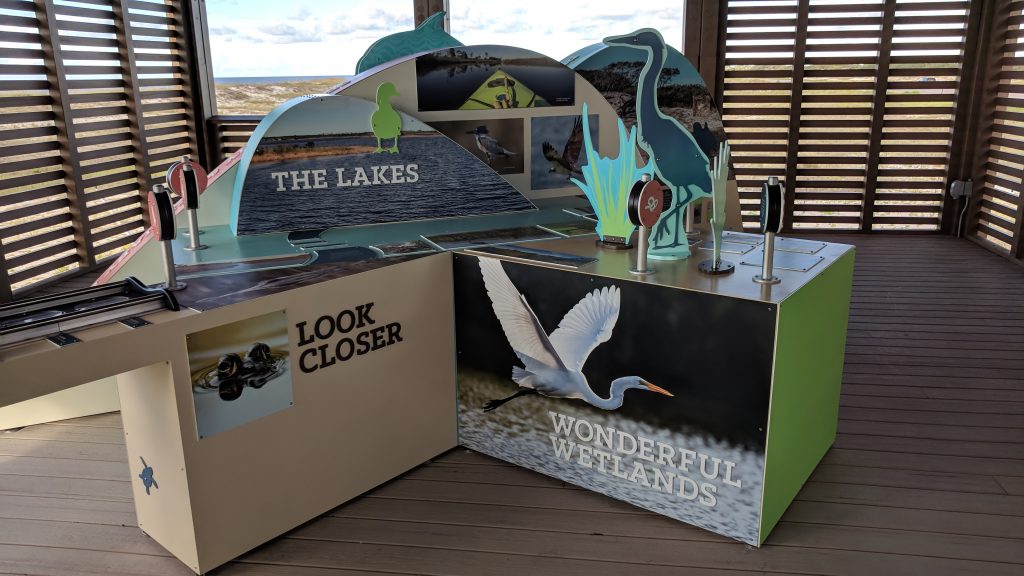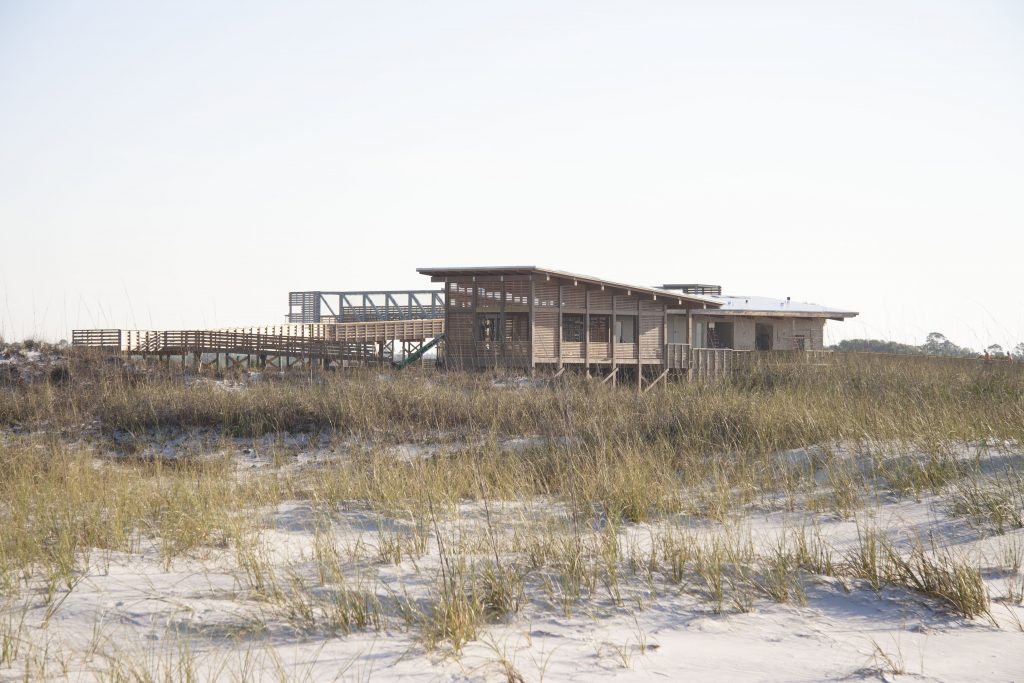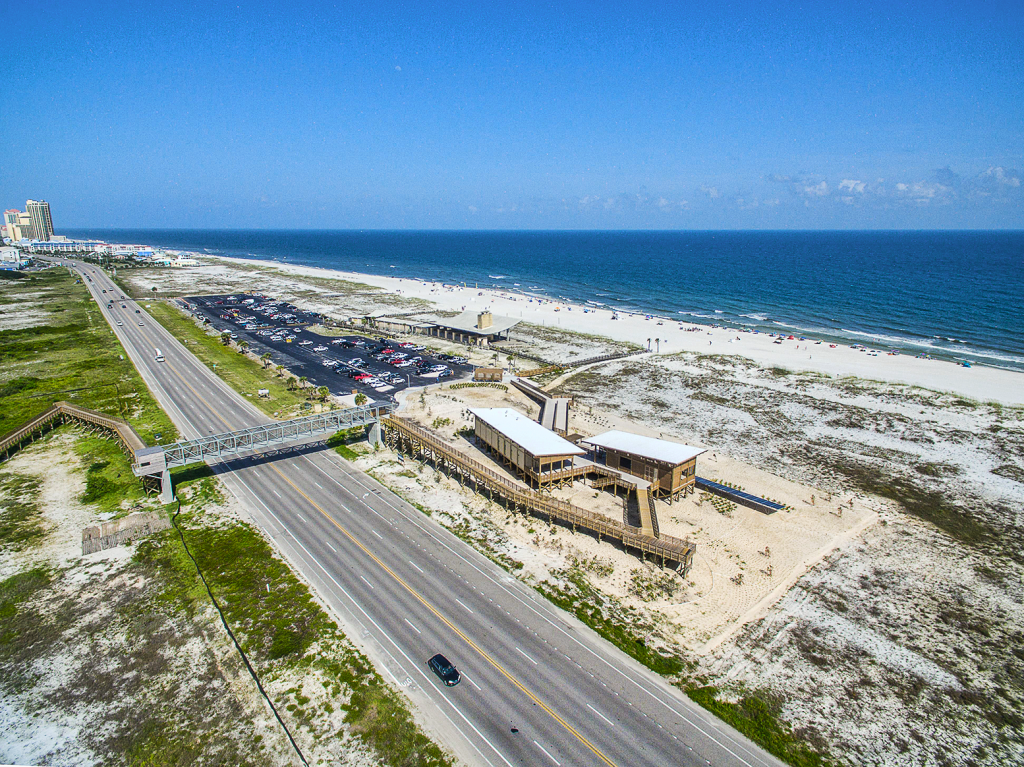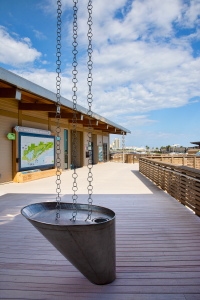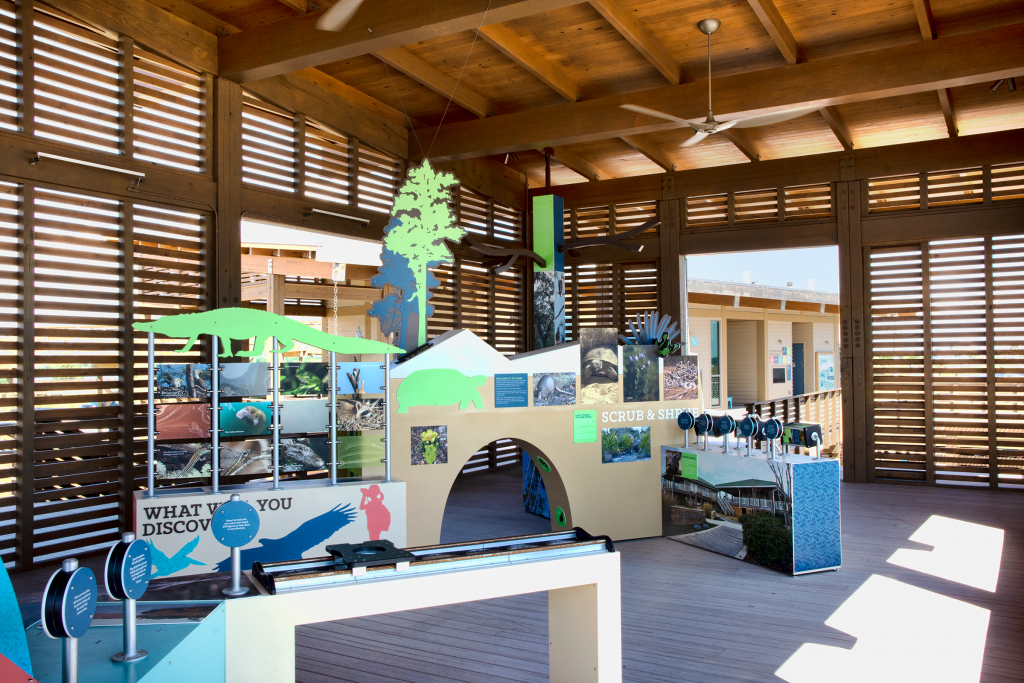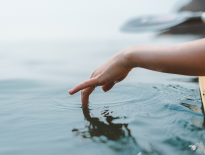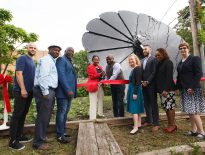The Gulf State Park Interpretive Center: A Southern Success Story
Gulf State Park is located on the southern coast of Alabama in Baldwin County, the fastest growing county in the state. It is 6,150 acres of natural beauty that includes 9 ecosystems, 2-1/2 miles of beaches, and a wide variety of wildlife. The park already receives over 2 million visitors a year visiting its 500-site campground, nature center, trails, and beaches. The Gulf State Park Enhancement Project began in 2013 as a broad multi-year effort to expand the public’s access to Gulf State Park and improve its environmental and economic performance. This effort includes the rebuilding of a 350-room lodge, a new Learning Campus, a new Interpretive Center, a 15-mile expansion and enhancement of the existing 12-mile trail system, and an innovative restoration effort of the dune system.
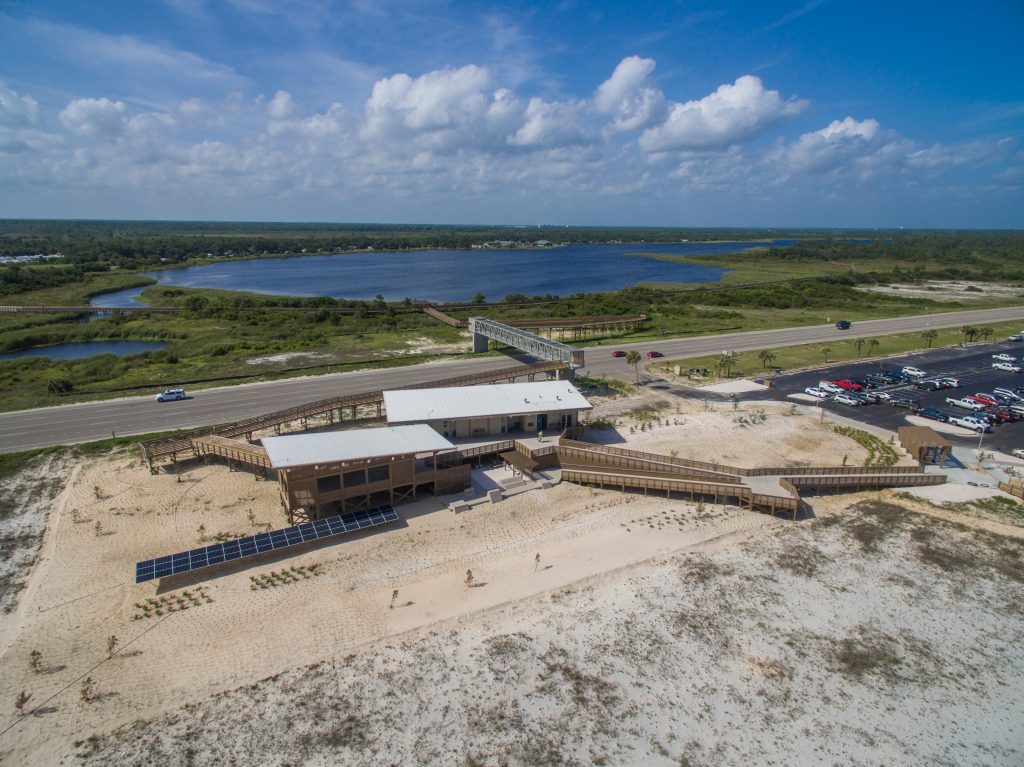 Gulf State Park’s vision statement expresses the park’s goal to be “an international benchmark of environmental and economic sustainability demonstrating best practices for outdoor recreation, education, and hospitable accommodations.” The Enhancement Project pushes the park towards that vision by assembling a collaborative group of professionals focused on implementing a set of construction projects that support an existing park, staff, and community love of place. The Interpretive Center is the educational gateway to the park and is a tangible expression of the vision for Gulf State Park.
Gulf State Park’s vision statement expresses the park’s goal to be “an international benchmark of environmental and economic sustainability demonstrating best practices for outdoor recreation, education, and hospitable accommodations.” The Enhancement Project pushes the park towards that vision by assembling a collaborative group of professionals focused on implementing a set of construction projects that support an existing park, staff, and community love of place. The Interpretive Center is the educational gateway to the park and is a tangible expression of the vision for Gulf State Park.
Master Plan Values and Aspirations
The implementation process for the Enhancement Project began with a Master Plan for Gulf State Park created by a team of design, ecology, and planning experts led by Sasaki Associates. This document was created with a wide range of community input gathered through 6 public open houses, more than 2,600 responses to an online survey, and numerous conversations with public officials. It validated the vision statement and established a series of six aspirational goals for the Enhancement Project: Restore the Environment, Improve Mobility, Learning Everywhere, Visitor Experience, Accessibility for All, and For All Ages. These goals became filters for each of the design elements of the Enhancement Project and a mechanism for creating a unified visitor experience throughout Gulf State Park.
The Gulf State Park Interpretive Center
The Interpretive Center is designed to be the clearest signal of Gulf State Park’s commitment to environmental sustainability and education. The initial design brief could have been a simple description of the park’s need for meeting space and classrooms as well as indoor and outdoor exhibits devoted to promoting better public understanding of Alabama’s coastal ecosystems. However, by applying the standards of the Living Building Challenge Living certification level, the Interpretive Center’s aspirations were collected into a measurable set of guidelines that aligned with Gulf State Park’s vision statement.
The Living Building Challenge encouraged the development and design teams to question original program assumptions and simplify the building while maintaining operational standards. To reduce energy demands, the building takes advantage of the coastal breezes and moves the majority of its program outside so that the design is focused on shading and protecting visitors. An indoor auditorium transformed into outdoor amphitheater seating so that education would occur in nature. The meeting space was reduced in size to align with small to mid-size community organizations. Gathering space moved outside to reduce conditioned space. The bathrooms are ventilated with natural air to control odors while cooling the rooms. Space underneath the building is used to provide shaded seating. Overall, the building program was reduced by 2,000 sqft.
The building will be a hub of activity for local community organizations and non-profits so that it can be an example of good and sustainable design. A separate and conditioned multi-function room is included so that community and park groups can have small scale events in the context of the park. Interpretive exhibits on the inside and outside of this room focus on the sustainable features of the building and its response to the Living Building Challenge.
The Interpretive Center is adjacent to an existing beach pavilion inside an active dune system. To take advantage of this unique condition, a well-defined, fully accessible sand play area is integrated into the building so that families and visitors can play in the sand while learning about how the dunes work. This area also integrates several educational features that encourage an awareness of the surrounding nature. Amphitheater seating creates a place for outdoor classes and lectures or evening events such as performances or movies. Sculptural sky viewing benches are a relaxing place to contemplate the evening stars. A play station includes a water pump that is tied into the building’s water supply and is limited to 100 gallons per day so that there is a connection between rainfall and play.
Another unique feature of this building is its connection to Gulf State Park’s 28-mile trail system via an elevated pedestrian bridge. The largest draw to this part of Alabama are the beaches, and Gulf State Park has preserved 2-1/2 miles of them. However, a major highway separates those beaches from the majority of the park. The Interpretive Center is designed to be a gateway to the entire park, so the project program was expanded to include a pedestrian bridge that has a major impact on the design of the facility and supports the public access goals of the project. The Interpretive Center was integrated into the bridge’s ramping system so that it is part of a visitor’s journey instead of being limited to a destination or trailhead.
Environmental Sustainability and Design
A tension exists between the human desire to be part of the natural environment and to concurrently protect that environment from human impact. Sometimes the appropriate reaction to that tension is to create a separation between people and nature. However, in the case of Gulf State Park, interaction and education are embedded in the mission of its parent organization, the Alabama State Parks System. In addition, the tourism-based economy of this region is dependent on the environment as its primary attraction. To separate visitors from the environment would mean removing a major source of funding for protection of that environment. The Enhancement Project needed to embrace this challenge and identify appropriate solutions that allowed for a balance of economic and environmental sustainability.
The Interpretive Center responded to this challenge through multiple design decisions. For example, the building adheres to a 225’ setback rule that was determined by scientists and ecologists at Biohabitats. This boundary was established so that buildings would not be sited inside the primary dune area and impede natural dune growth. The primary deck is elevated to protect the building from storm surges and allow the sand to naturally migrate underneath the structure. In addition, the building takes advantage of its height by using interpretive signs to explain significant views of the dune’s natural processes and restoration efforts. The sand play area is integrated into the design of the facility so that visitors can directly interact with nature in a controlled environment that doesn’t negatively impact the dunes.
Interpretation and Education
Interpretation as a practice has evolved beyond signs and static exhibits. Through interaction and engagement, interpretive facilities are becoming places of activity that inspire curiosity and interest in learning more about a topic. The Interpretive Center fully embraces the notions of inspiration and curiosity to create an integrated facility. Exhibits and the architecture are designed to cohesively display the sustainable features of the building and inspire visitors to explore all of Gulf State Park.
Good examples of how the design team responded to the interpretive challenge can be seen in the integration of the building into the natural processes of water. All water runoff from the roofs are captured and transported via decorative rain chains and basins that celebrate the movement of water to the 11,000-gallon tank that sits next to the entry ramp. Coastal Alabama regularly experiences dramatic afternoon rain events that drive beachgoers to their cars, condos, and hotel rooms. The Interpretive Center’s deep overhangs allow beach visitors to stay dry during those events and enjoy the show celebrated by the building’s design.
A Balance of Environmental and Economic Sustainability
First, there was Nature Tourism: tourism where natural features are the primary attraction. Next came Eco-Tourism: tourism to natural destinations where protection of the local community, culture, economy, and environment became embedded in the experience. Now, there is Sustainable Tourism: the expansion of those goals to be applied to the entire tourism industry. The Enhancement Project embraces Sustainable Tourism as a goal that encapsulates the environmental and economic balance but elevates it to an international market and true aspiration.
For the Interpretive Center, initial skepticism of the Living Building Challenge was focused on the premium construction costs. However, an internal qualitative analysis indicated that to achieve the full economic potential of Sustainable Tourism, Gulf State Park needed a series of dramatic projects that clearly stated its intent to act as an international benchmark. The Interpretive Center was conceived as an iconic building that is highly visible to coastal visitors. It is also designed to attract visitors from around the world that would like to engage with one of the world’s most sustainable buildings in the context of a coastal environment and park that is committed to developing facilities that respect that environment and the neighboring communities. In addition to Living certification, the Interpretive Center is seeking LEED Platinum certification and was recently designated as the first FORTIFIED Commercial building in the world. Other facilities in the park are seeking LEED, SITES, and FORTIFIED Commercial certifications. The Lodge at Gulf State Park is seeking LEED Gold certification and is the first hospitality project in the world to seek SITES Platinum certification.
Building the A-Team
The delivery team consisted of four distinct groups: the development team, the design team, a construction manager, and a contractor. While the structure of the team seems routine, the Living Building Challenge required a collection of individuals that were curious, collaborative, and talented.
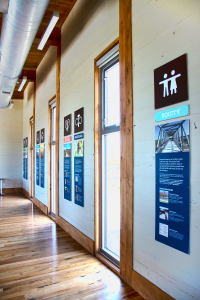
The development team was led by the University of Alabama’s Center for Economic Development (UACED). Major responsibilities included defining the overarching goals for the Enhancement Project, assembling the delivery team, and managing that team to an on-time and in-budget delivery. UACED represented the project’s owners, the Alabama Department of Conservation and Natural Resources.
The design team was built using a public RFP process that simultaneously adhered to state law and set clear aspirations for the Interpretive Center, including pursuit of the Living Building Challenge. This team was led by Architecture Works, an Alabama based firm with deep experience in designing contextual responses to environmental and programmatic challenges. In addition to the normal team of engineers, this team also included Hersick + Webster as the interpretive designer so that education would be imbedded in the design of the building. Importantly, this team also included landscape architects from Sasaki that had participated in the master plan process.
The construction management team was a coordinated effort between Volkert, Inc and Skanska. Volkert’s experience in managing construction projects in Alabama allowed them to serve as integral partner in the development of the project while Skanska’s experience with the construction of a Living Building was an indispensable benefit to the Interpretive Center. Their presence during the pre-design and design phases of the project were essential to a successful delivery of the final building.
In a public bid process, there is always the possibility that the selected contractor is not necessarily the most qualified contractor. Because of a rigorous pre-qualification effort organized by the construction manager, the Interpretive Center benefited from a highly experienced construction team from The Lemoine Company.
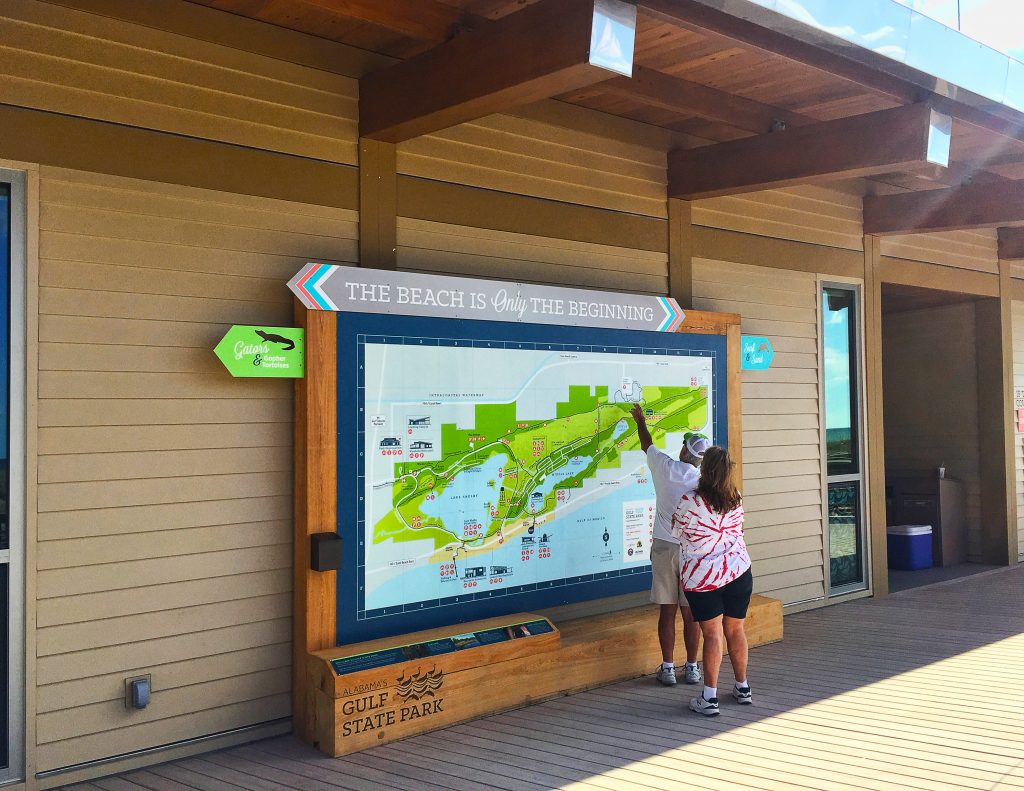
Outcomes: Now and Future
The Gulf State Park Interpretive Center opened in June 2018 and expects to start its LBC evaluation period by the end of the year. For such a diminutive structure, the Interpretive Center carries a large burden. It has been woven into the fabric of Gulf State Park as a demonstration of the park’s aspirations. It is meant to draw worldwide attention to the natural beauty of Alabama and its citizens’ respect for the environment. This building will act as a background and support mechanism for the park and the State Park System as they educate the public about Gulf State Park and its importance to the coastal environment and the economy.
Its positive impact on Gulf State Park was made immediately apparent during the ribbon cutting ceremony when the pedestrian bridge was opened for visitors. As the Governor was still introducing the building, in the background, visitors could be seen running and biking through the Interpretive Center with smiles and looks of curiosity spread across their faces. The success of the Interpretive Center will be measured by the growth of that crowd and their engagement with Gulf State Park.

